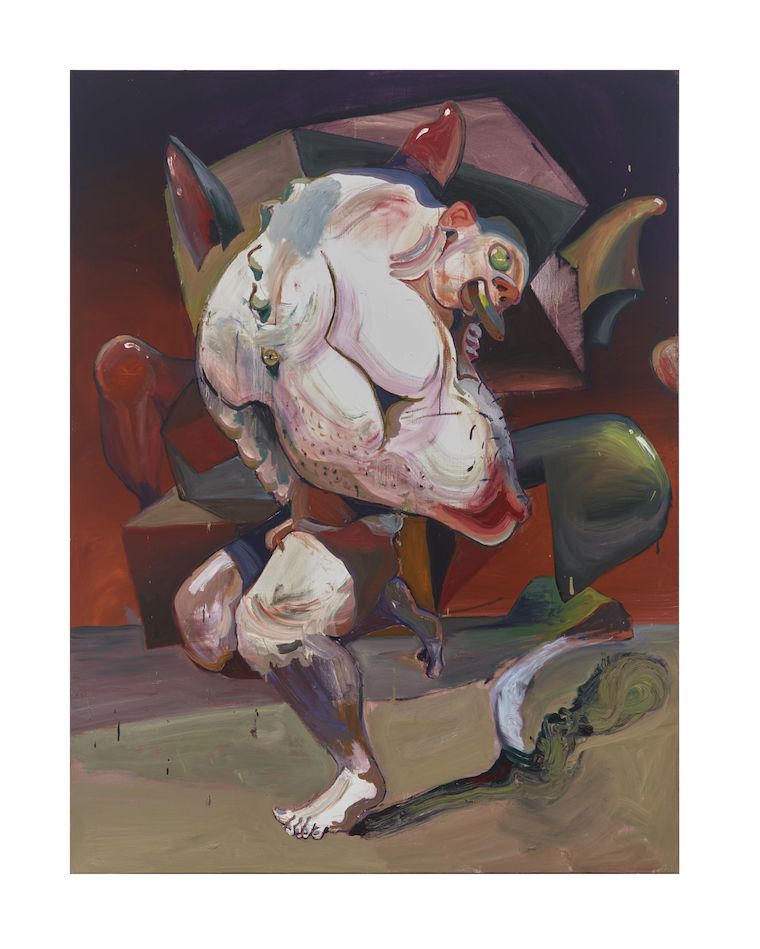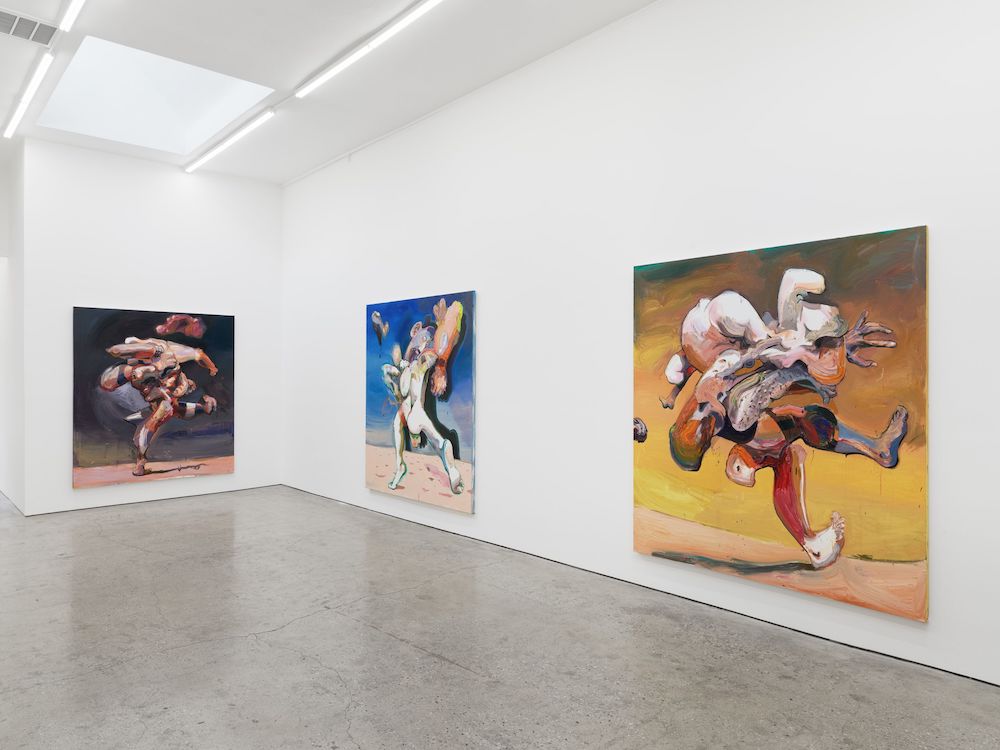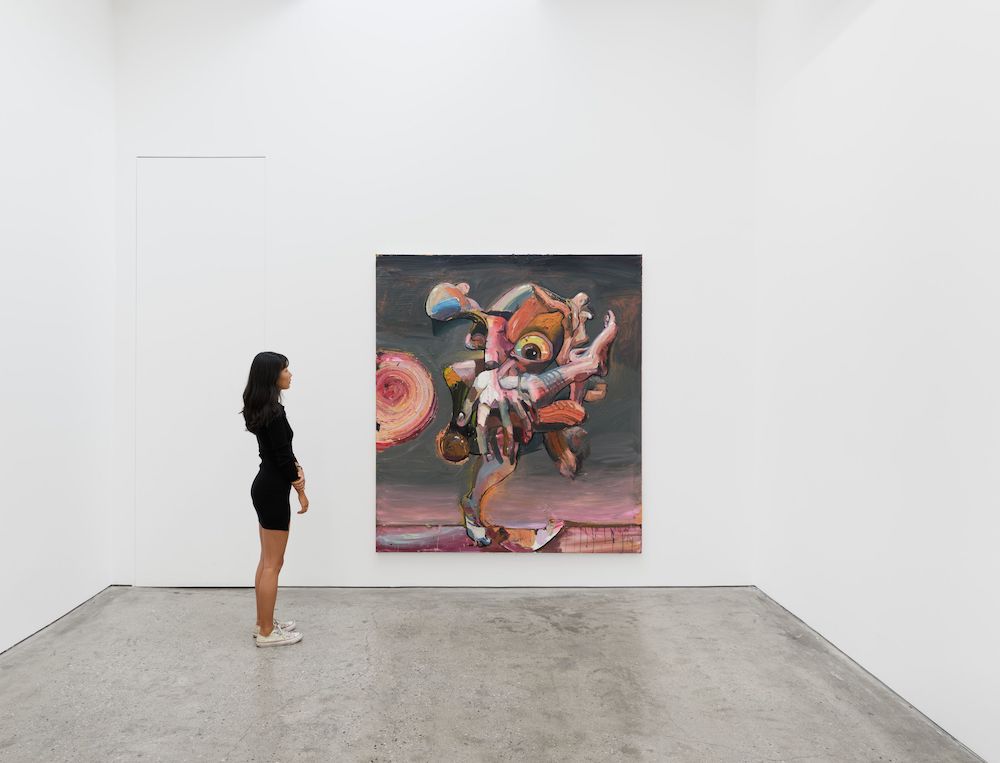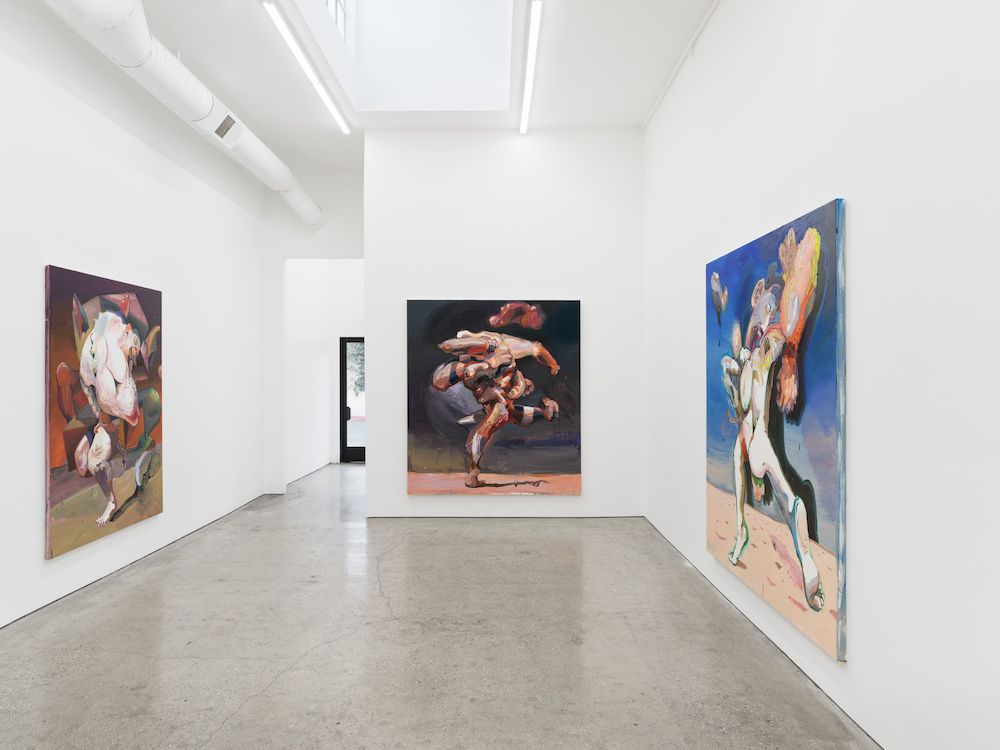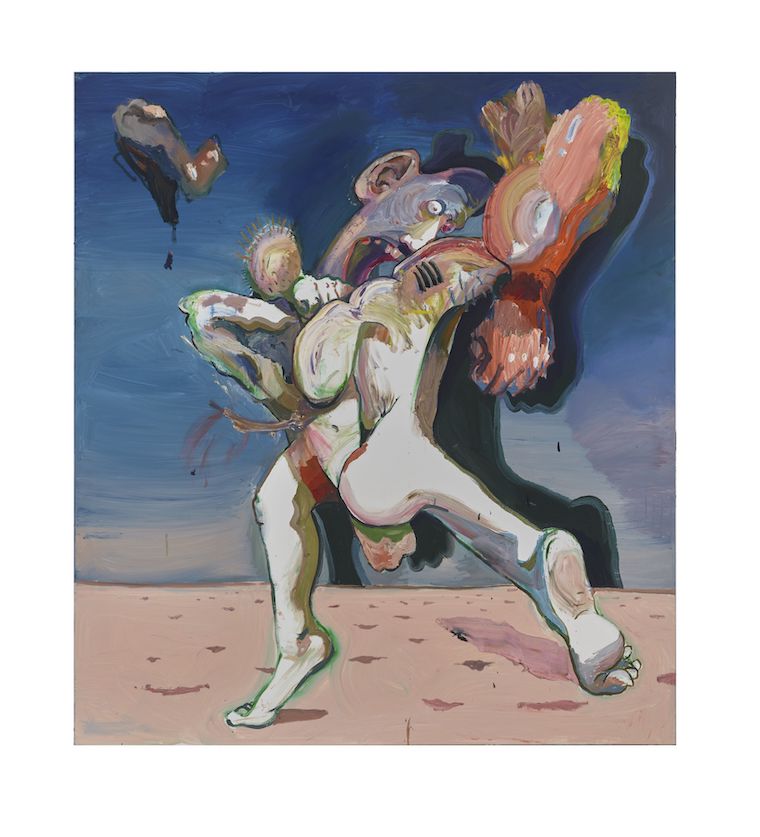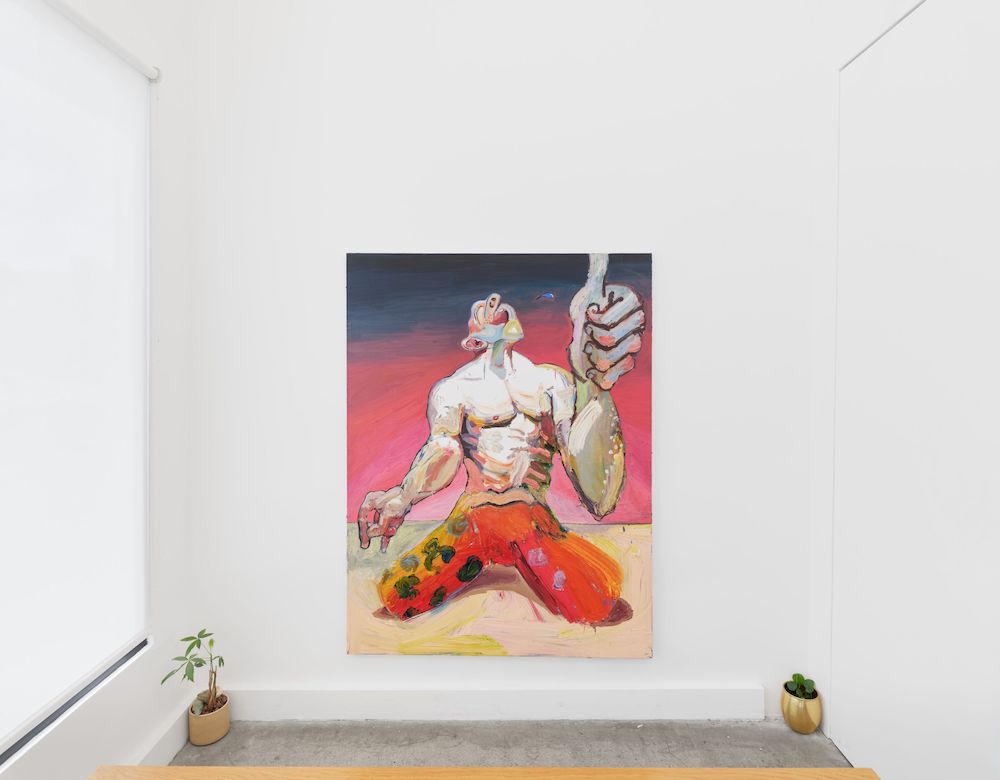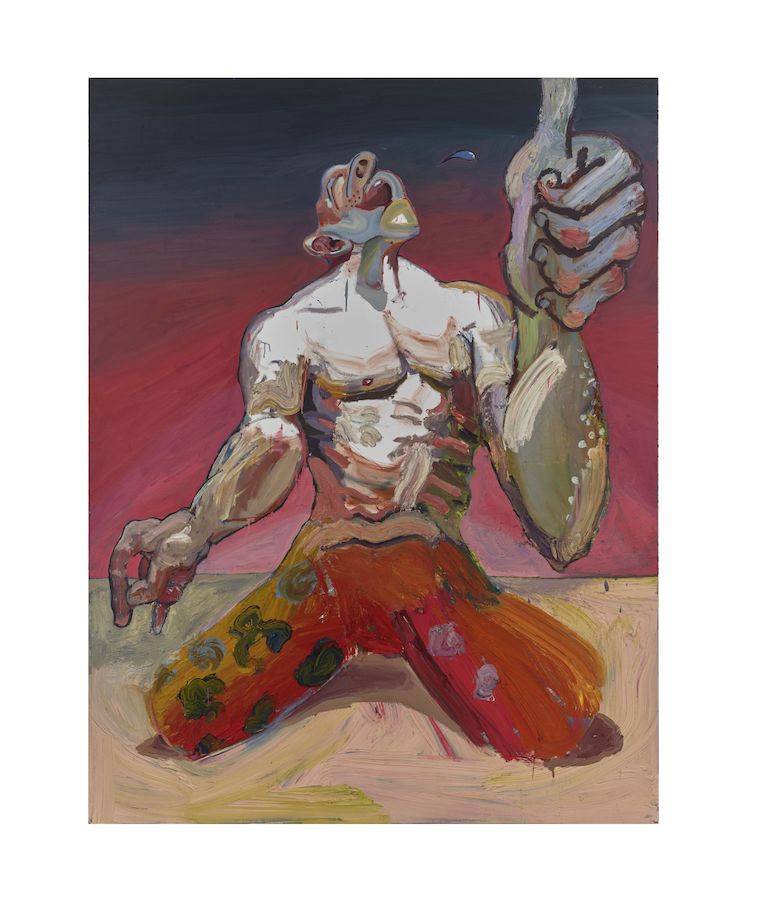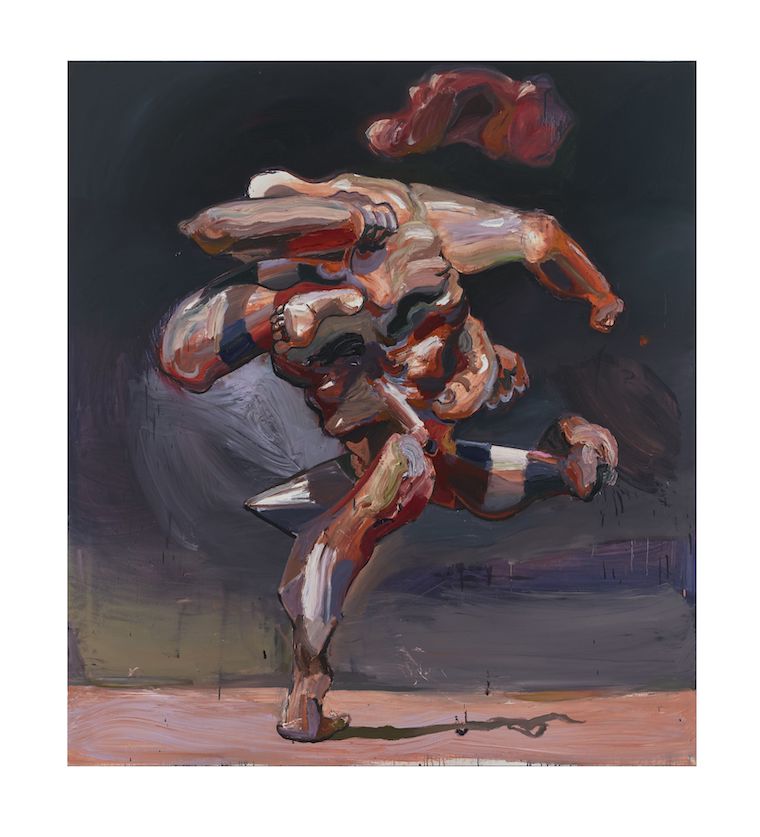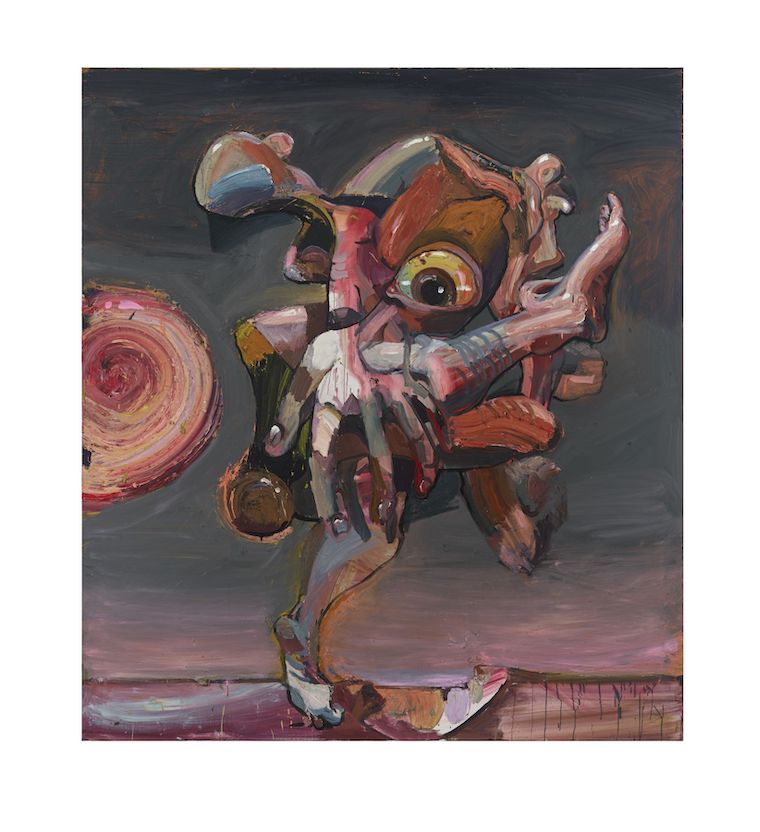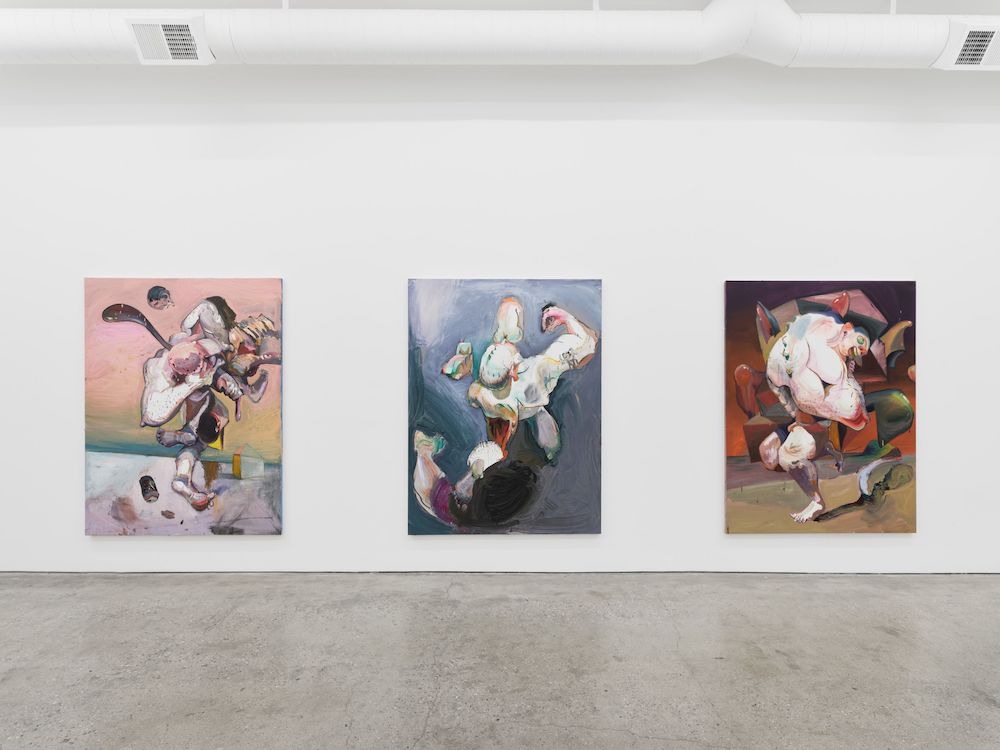Nino Mier Gallery is thrilled to present The Debate, an exhibition of paintings by Australian painter Ben Quilty, on view in Los Angeles through June 25, 2022. The new suite of works continues the artist’s thematic examination of masculinity and violence in Western communities.
Based on drawings of young men training for a fight, Quilty’s paintings contain surreal forms set against bare, apocalyptic backdrops. Each work contains a central figure who stands, sits, or falls in a shallow foreground. Like actors on a stage, they command the compositions, offering an abundance of energy, motion, and color before their outdoor backdrops, which resemble the harrowing vastness of sandy, unpopulated beaches or the desert. The series of portraits began as the artist considered the violent riots on the beaches of Sydney in 2005. Following the riots, travel warnings were announced in countries around the world, and Muslims were targeted relentlessly, encouraged openly by members of the government and the media. As Quilty explains, “blood on the beaches was a haunting reminder of the first blood spilled on the same beaches when British ships first made contact with indigenous Australians two and a half centuries ago.”
Quilty’s men are monstrous and misshapen. Certain features of their anatomies are blown out of proportion, such as the thumbs-up in The War Crime; while others are misplaced, such as the foot emerging from an arm in The Senator. These grotesque configurations are redolent of Francis Bacon’s cursed subjects, who contort violently, collapsing in on themselves and into the materiality of paint.
It is impossible to cleave apart Quilty’s approach to content and form in The Debate. The figures disintegrate into formlessness, caught in rushes of violence. In The Diplomat, for instance, a cluster of thickly-applied parallel lines in the right margin of the painting suggests ferocious movement. Here, Quilty borrows a photographic mode of indexing motion: the blur captured by a camera’s shutter speed. Just as the haziness of motion blur in a photograph emphasizes the materiality, rather than transparency, of the image, Quilty’s Guston-like impastoed paint emphasizes the mediation of his images and imparts a sense of fleshiness to his surfaces.
Colonization, violence, and masculinity have long concerned the artist, who joined the Australian Defense Force in 2011 as an official war artist tasked with interpreting the experiences of Australian service personnel. And in 2016, Quilty traveled to Greece, Serbia, and Lebanon with Australian writer Richard Flanagan to produce art that captured experiences of the refugee crisis. He found that the photographs he took while dispatched did not adequately capture the feel of the experiences, and therefore turned to paint. As the artist notes, “Men continue to fight each other. Diplomacy is a dying art. Hacking, punching, spitting our way into the 21st century.”



